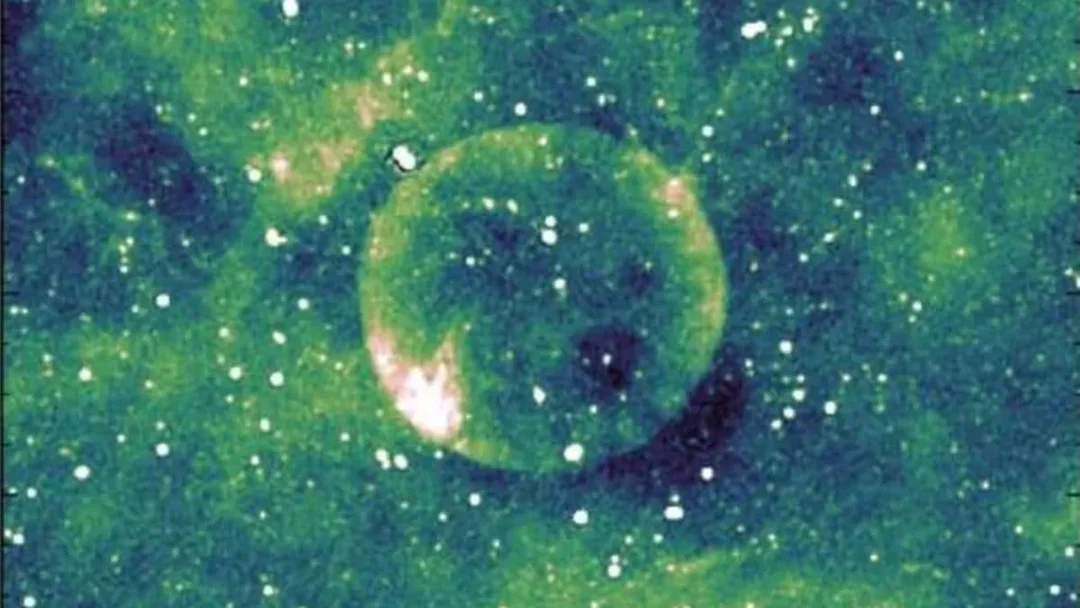
Cosmic Enigma: Perfectly Spherical Supernova Remnant Baffles Astronomers – Is It a ‘Teleios’?
Astronomers have stumbled upon a truly remarkable cosmic anomaly: a near-perfectly spherical supernova remnant dubbed Teleios, from the Greek word meaning "perfect." This celestial bubble, nestled deep within the Milky Way, is challenging existing models of stellar evolution and sparking intense curiosity among the scientific community. Why is it so round? And what secrets does its symmetry hold?
The discovery was serendipitous. Astrophysicist Miroslav Filipović from Western Sydney University spotted Teleios while examining images from the Australian Square Kilometre Array Pathfinder (ASKAP) – part of the ambitious Evolutionary Map of the Universe (EMU) project. The remnant immediately stood out due to its unparalleled circular shape.

A Rare Cosmic Circle
Supernova remnants are typically messy affairs – uneven, distorted by chaotic explosions and interactions with surrounding interstellar material. Teleios defies this norm, boasting a circularity measured at an astounding 95.4%. "What makes Teleios' shape so remarkable is that it displays none of these asymmetries," Filipović explained. "It looks like an explosion that happened with nearly perfect conditions, encountering minimal disruption while expanding."
Distance Dilemma: How Far, How Old?
Pinpointing Teleios's exact distance has proven tricky. Radio measurements suggest it could be either 7,175 or 25,114 light-years from Earth. This ambiguity creates significant uncertainty about its actual size and age. At the closer distance, it would span approximately 46 light-years, suggesting a relatively young age (under 1,000 years). At the farther distance, it would measure around 157 light-years, indicating an age exceeding 10,000 years.

The Missing X-rays: A Cosmic Mystery
One of the biggest puzzles surrounding Teleios is its lack of X-ray emissions. Supernova remnants usually emit strongly across multiple wavelengths, including X-rays. However, Teleios is primarily detectable at radio wavelengths, with only faint traces of hydrogen-alpha and gamma-ray signals. The absence of X-rays contradicts what scientists expect from an energetic, expanding remnant.
“Most supernova remnants show emissions at optical, infrared, or X-ray frequencies," noted Filipović. "The absence of X-ray emissions here is confusing. Perhaps the temperatures aren’t high enough, or Teleios might be old enough for optical emissions to fade." Researchers are considering alternative explanations, including a rare Type Iax supernova, but none perfectly fit the available data.
Why So Perfectly Round?
Aside from the emission anomalies, Teleios's perfect shape begs the question: how? The scientific community speculates it may have formed in a sparsely populated region of space, just below the Galactic Plane, where interstellar material is scarce. This would allow for a uniform, unhindered expansion, preserving its spherical shape.
"Teleios is unusual because it hasn't faced any major disruptions," Filipović stated. "It's in a place with much less gas and dust, allowing it to maintain this extraordinary shape."
Future Observations: Unraveling the Secrets
The discovery of Teleios highlights the power of modern telescopes like ASKAP. Further observations and advanced modeling are critical to understanding its true nature. New data could confirm its precise distance and potentially detect the elusive X-ray emissions, shedding light on its evolutionary history.
This cosmic puzzle challenges our understanding of supernova remnants and stellar evolution. What do you think about the origin of Teleios? Does it suggest a new supernova model?
Leave your comments and thoughts below!